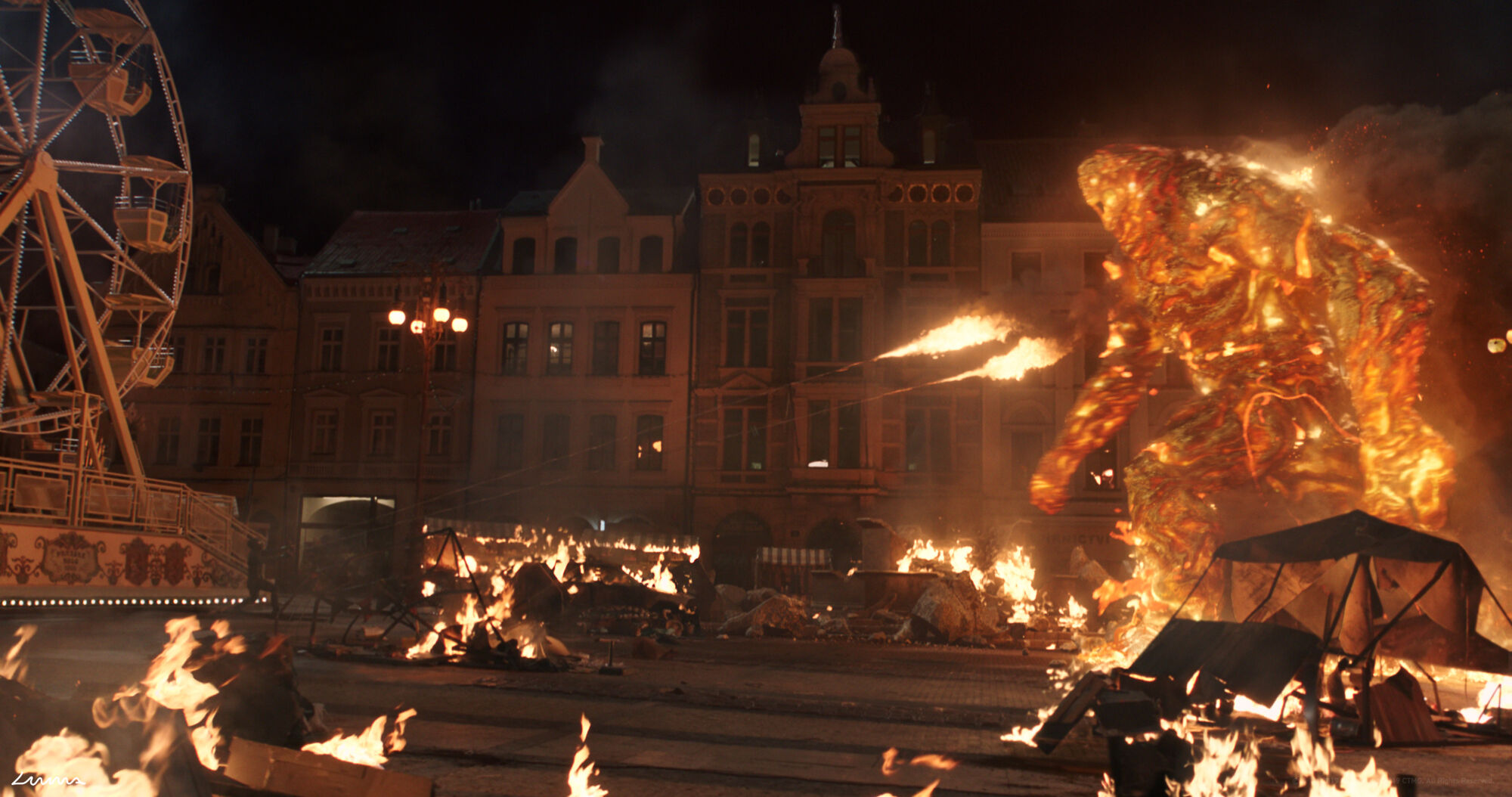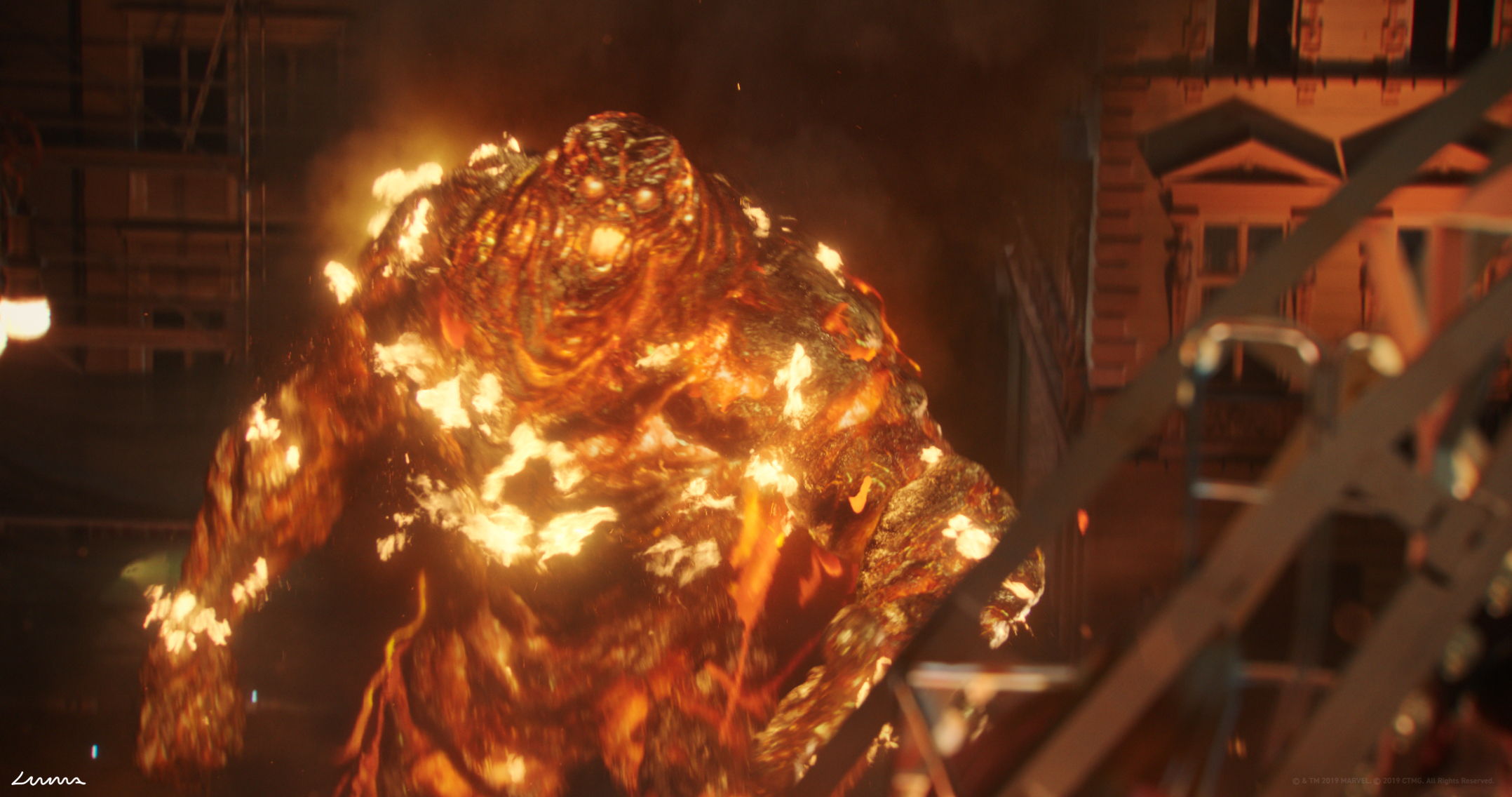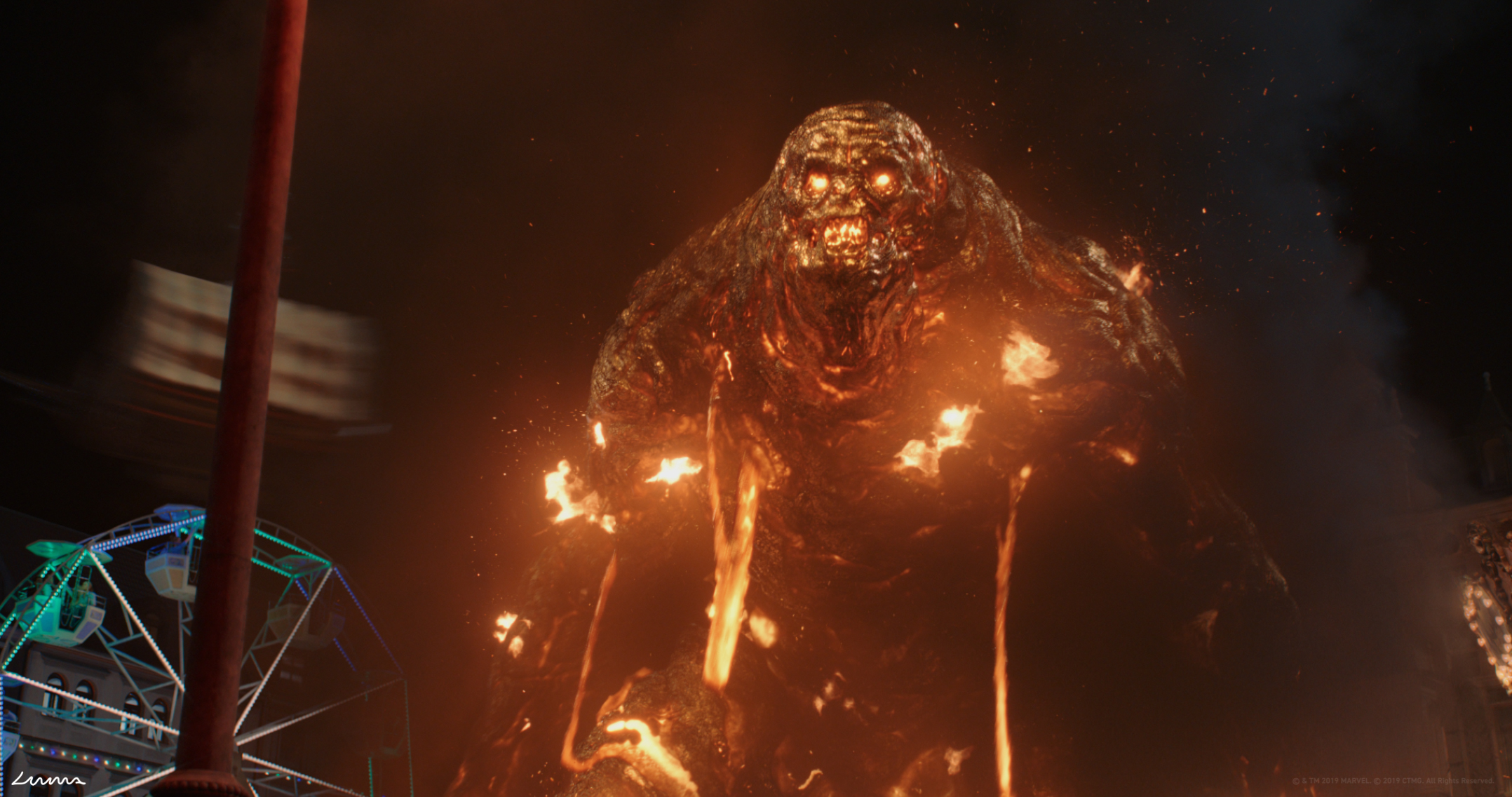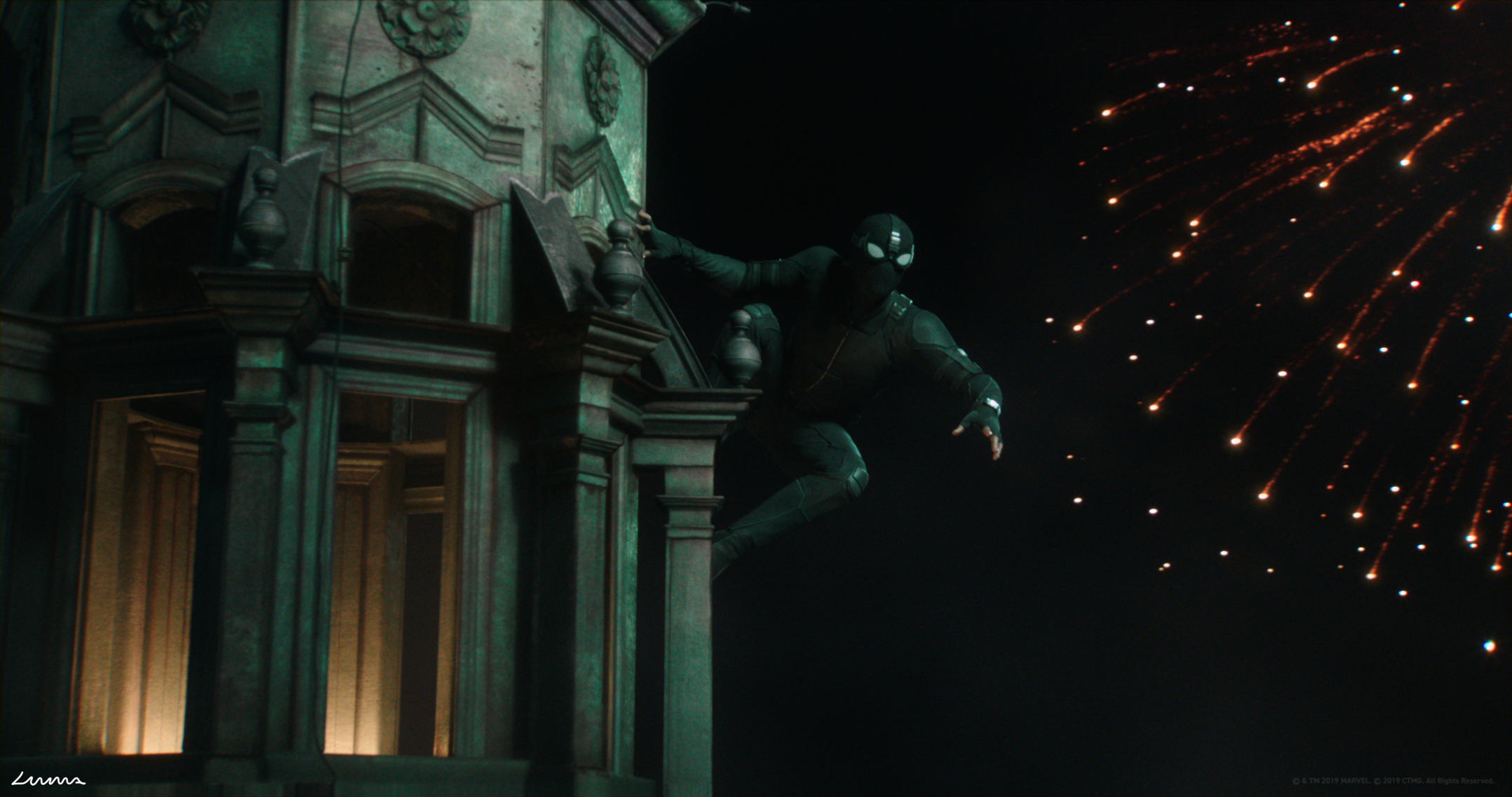Leading independent studio, Luma Pictures, teamed up with Marvel Studios to deliver nearly 330 visual effects shots for the studio’s latest blockbuster hit, Spider-Man: Far From Home.
Luma’s most significant contribution to the film involved the action-packed battle between Spider-Man, Mysterio, and Molten Man. After earning AACTA nominations for their work on Doctor Strange and Black Panther, Luma has submitted their elaborate work on Spider-Man: Far From Home for consideration for this year’s AACTA Award for Best Visual Effects.
We chatted with Luma Melbourne’s VFX Supervisor, Brendan Seals, to learn all about the studio’s work on the show:
How did Luma get involved with the show?
We’ve had a long-standing relationship with Marvel Studios for the last 10 years. We were lucky to be the lead vendor on Spider-Man: Homecoming, where we established a relationship with the Overall VFX Supervisor, Janek Sirrs. We engaged with the client around February 2018 and looked at a visually interesting storyboard for the Molten Man sequence. It was a unique opportunity for Luma because it brought all elements together and stepped it up a notch in terms of how dynamic and complex the components were.
At the time, it seemed that at least half the sequences were going to be full CG and we jumped at that opportunity. I took on board the idea of a two-week pitch for the Molten Man battle with a full CG test. Marvel’s initial brief for the character was that he was a molten/metal creature that could absorb metallic substances, but that he shouldn’t mimic other lava characters. We designed, modelled, textured, and even added the fluid and volume effects within two weeks. It grabbed the attention of director Jon Watts, and was actually showed to him on set. That was the beginning of ultimately, what is now Molten Man in the movie.
What were the significant challenges during the development of Molten Man?
The sequence posed a lot of exciting challenges, most notably around the complexity of the effects-driven character in Molten Man. Every single shot needed bespoke work just to get him realised. He wasn’t a pre-textured character that was being animated —he was fully simulated. His surface, properties, and look were art directed in every single shot, which can be quite challenging because he never looks the same in any given frame.
We focused the design phase on figuring out how to approach the character design process of a Marvel film, which is all about interesting silhouettes and comic book styles, but with a character that shifts and changes in every frame. We approached Molten Man like a traditional character and then developed an effects workflow to maintain the character’s look. A lot of time was spent between the effects department and the asset department to make sure that the simulated surface paid respect to the original design and form.

Other challenging aspects of the sequence involved capturing the space and all the action happening within it. We provided tech-vis to Marvel early on to explore shot designs and compositions with cameras, cranes, and equipment. We offered our own CG virtual cinematography, which proved to be mutually beneficial because we were involved much earlier in the process and got ahead on staging the action. Marvel used the tech-vis to plan out how to capture the Liberec Square, which ended up coming back to us and meant that the photography and our tech-vis were speaking the same language. It made the back and forth between Luma and Marvel quite seamless.
What new tools or technology did you utilise to achieve this sequence?
We had to set up clear guidelines on how Molten Man could be reproduced in every shot in a controlled and art-directable way. We leveraged a system that we’ve been refining for a couple of years now, called RILL. RILL is a nodal network automation system that enables a user to plug-in building blocks that tell the computer what to do. We used this automation to create building blocks for the look of Molten Man. This system provided artists with a strong launching point in which they could solely concentrate on refinement. It ensured parity across all departments and was the most extensive automation system we’ve ever built.
How did you arrive at the final look of Molten Man?
We discovered that the speed of real lava flow was too slow for cinematic purposes, so we referenced time-lapsed lava flow instead to heighten the dynamic nature of Molten Man’s surface. To keep his silhouette recognisable as he melts, we treated his lava like blood circulation, so that it was always heating up and dripping off the surface, while the metal was cooling down and solidifying. To keep his look consistent, we designed gold islands like a muscle system that would grow from the original design, cool down, flow, and then seep back into his body. We were able to art-direct the lava flow in every single shot.
There was also an excellent consideration for Molten Man on set and production set up lights deliberately in places to cast a warm light on to the environment. This was important in making sure that the character was rooted in reality and affecting his surroundings. We did things like rendering all reflections of Mysterio, Molten Man, and all the fire and embers in every single window in each building. All these fine details tied together to help make the audience feel like Molten Man is really there.
The action sequence involves a huge battle between Molten Man, Spider-Man and Mysterio with destruction happening to the whole environment. How did you approach the other characters in this fight sequence?
We were involved in the motion capture process with Tom Holland on Spider-Man: Homecoming and developed a great rapport with him. Of course, it’s not just about reusing what we’ve previously captured, but reinventing and upgrading for the story you’re trying to tell. Tom is incredibly spontaneous and great about ensuring we get good coverage so that we can get as many inflections of his character as possible. This is really important because the end result can’t just look like Spider-Man, but Tom Holland as Spider-Man.
For Mysterio, a lot of his energy that he conjures was bespoke, and the intent was to put Mysterio’s showmanship on display. This was the final climactic battle against the Elementals, and Marvel challenged us to make it over-the-top. We designed a lot of this ourselves and pitched looks to Marvel. A lot of those looks became references for Marvel and for the look itself, so we were fortunate to be in the driver’s seat for this. I’m really proud of what we contributed to the design language of Mysterio for this film.
How did you approach the environment?
Marvel Studios filmed the battle in a way that allowed us the freedom to post-animate the camera work. More often than not, if the action deserved the camera to go off the ground, through the air, and do things you can’t necessarily do on set, we would just replace with a full CG environment. Having a full CG environment allowed Luma and Marvel the freedom to craft the sequence, which evolved over time. It became more about the Mysterio and Spider-Man duo, so the more we had control over the camera, the more we could highlight the pair against Molten Man in the sequence.
What was a big takeaway for you on this project?
Spider-Man: Far From Home was an immensely rewarding project for Luma. It felt like the birth of our modern effects pipeline. We had an incredibly talented and impressive team, and I’m proud of what we achieved. Being on a project for over a year commands a dedicated team and raw talent. We’ve been really lucky in securing that talent at Luma, and I’m excited about what they can bring to the table for future projects.
If you would like to discuss projects with Luma get in touch here.










